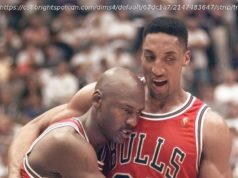Way back when, the Charlotte branch of the Carolina Motor Club (now AAA) not only provided vacation planning and auto safety tips, they also distributed license tags and plates. From the 1950s to the 1970s the Motor Club offices were at 701 S. Tryon Street, near the old Observer building and Morehead Street. The building was demolished in 1979 to make way for I-277.
Here’s an excerpt from a 1966 Observer story that ran in the Travel section:
It Began Sixty Years Ago
Auto Tag Business Isn’t New
February 27, 1966
By Dick Pitts, Carolina Motor Club
“By now, most Charlotte motor vehicle owners have affixed to the front or rear of their vehicle a city tag, signifying that they are good, dues-paying members of the community.
Some, of course, do not let go of that extra one dollar on the assumption that they will not be detected and fined.
It began 60 years ago, when a 1905 city ordinance decreed that all automobiles or horseless carriages be licensed.
One of the first city license tags issued in 1905 was brought to light by F. M. Moore, Carolina Motor Club sales rep. It is a brass tag, three inches wide and one and a half inches deep, slightly oval in shape, with this legend: ‘License, Four Seat Automobile, No. 11, Charlotte, NC, 1905.’ It had been purchased by Mr. Moore’s father.
It wasn’t until 1909 that state officials of North Carolina, concerned with the rising tide of horseless carriages, decided on a nose count. When it was over, 1,681 vehicles propelled by gasoline engines were discovered and plans were made to have each one registered.
Applications were filed with a fee of $5. In turn, owners were issued a set of numbers and instructed to place them somewhere on their car. This casual approach resulted in a variety of homemade tags constructed of wood, tin, enamel, and other materials.
Color scheme the first year was black on white, or vice versa if you preferred. Numbers, however, had to be ‘Arabic numerals at least three inches high.’”
It is said that John Parks, the publisher of the Raleigh Times for many years, was the first Tar Heel to get a license number — he painted his numerals on a square of black oil cloth, folded it over a piece of wood and tacked it on!
“The do-it-yourself trend halted in 1913 when the state began furnishing (but not manufacturing) tags. It was in January, 1930, that prison labor began hammering out tags, a practice that has continued to the present.”
+ +
Flash forward to today: We still stand in line for our license plates! There must be a way around it… maybe. I don’t think so. Rats.






